Filmmaker Walter Hill knows a thing or two about action buddy movies. His 1982 thriller 48 Hrs. established a format which was widely emulated in the years afterwards: mismatched, hot-tempered characters (one or both cops) begrudgingly teaming up to crack a case in a race against time.
Six years after 48 Hrs., Hill took on a similar concept, this time casting Arnold Schwarzenegger alongside the unlikely co-star of James Belushi in the high-octane cop thriller Red Heat. Let’s head back to 1988, and back behind the Iron Curtain, for some facts you might not have known about the film.
20. Writer-director Walter Hill conceived the movie with Schwarzenegger in mind
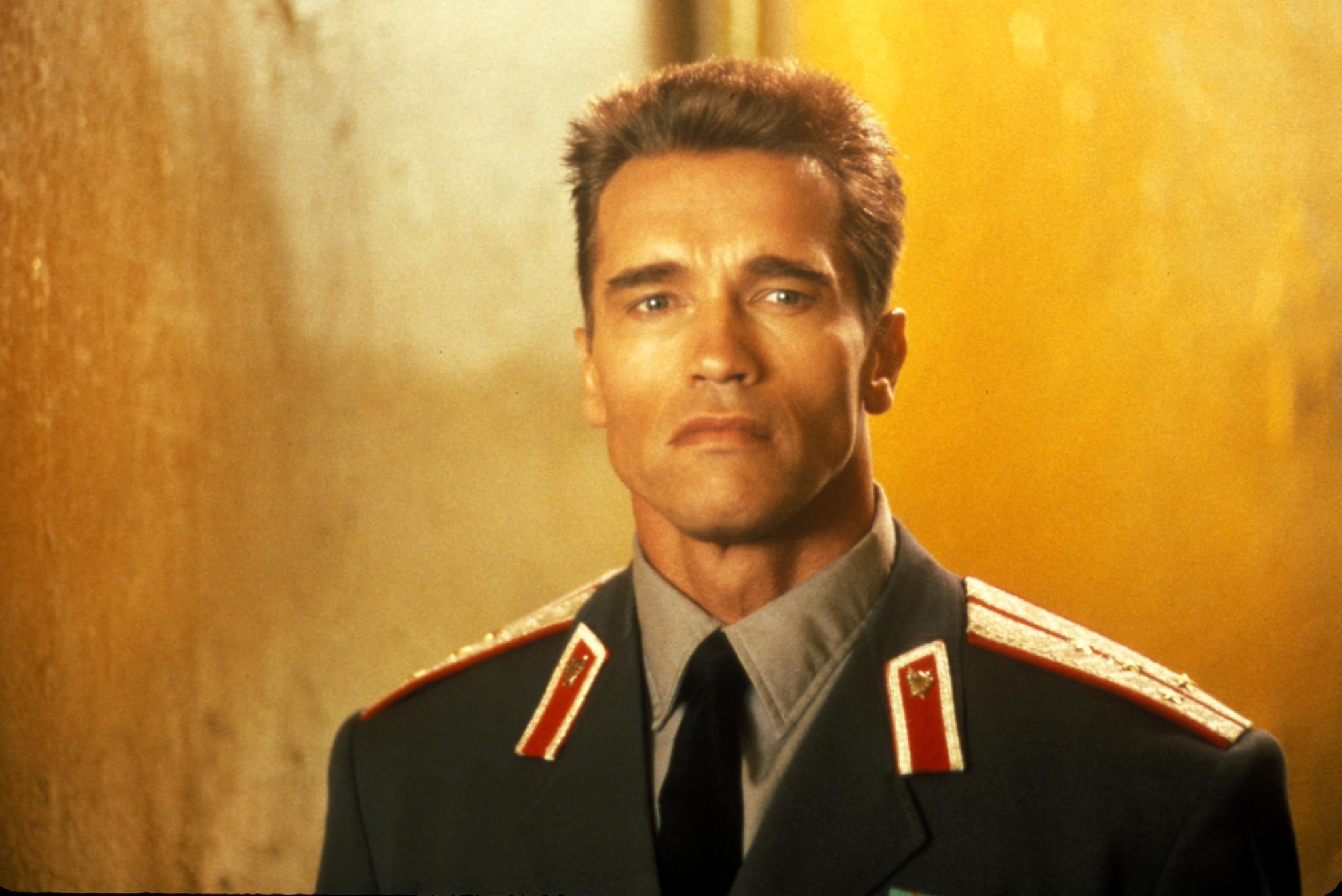
Walter Hill and Arnold Schwarzenegger had wanted to make a film together for some time, but it took the filmmaker a while to find the right concept for the Austrian action hero, explaining “it’s tough to use Arnold credibly in an American context with his accent.”
Eventually, Hill hit on the idea of casting Schwarzenegger as a Russian police officer forced to come stateside on a case. They realised that, given the political climate of the time, presenting a Soviet hero in an American movie was a bold move, but production company Carolco and distributor Tri-Star Pictures gave them a green light.
19. Schwarzenegger said yes based on the “Cocainum!” scene alone
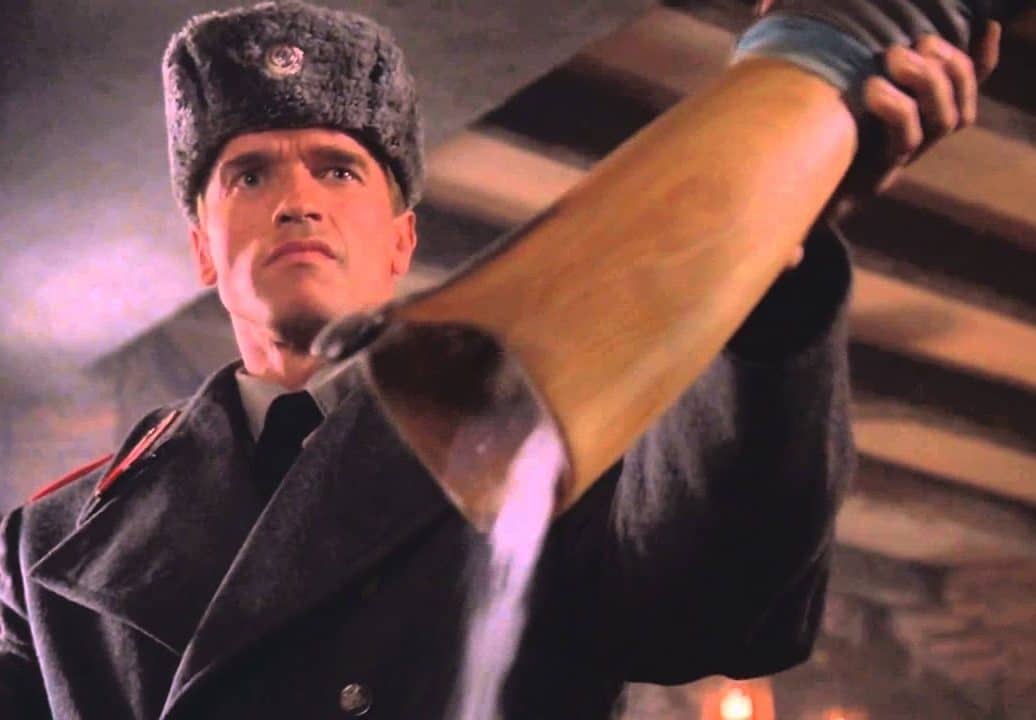
One of the most memorable moments in Red Heat sees Schwarzenegger’s Captain Ivan Danko tear the wooden leg off a bad guy. The Soviet cop then tips the leg up to reveal it is full of white powder, and exclaims (with alarmingly wide eyes), “Cocainum!”
This was the first scene Walter Hill described to Schwarzenegger on pitching him the project, and that alone was enough to make the star say yes. However, unbeknownst to Schwarzenegger, Hill had yet to write the Red Heat script at the time: all he had was the concept and that scene (which he had borrowed, with permission, from another writer’s unproduced screenplay).
18. James Belushi was ordered to bulk up, whilst Schwarzenegger was asked to slim down
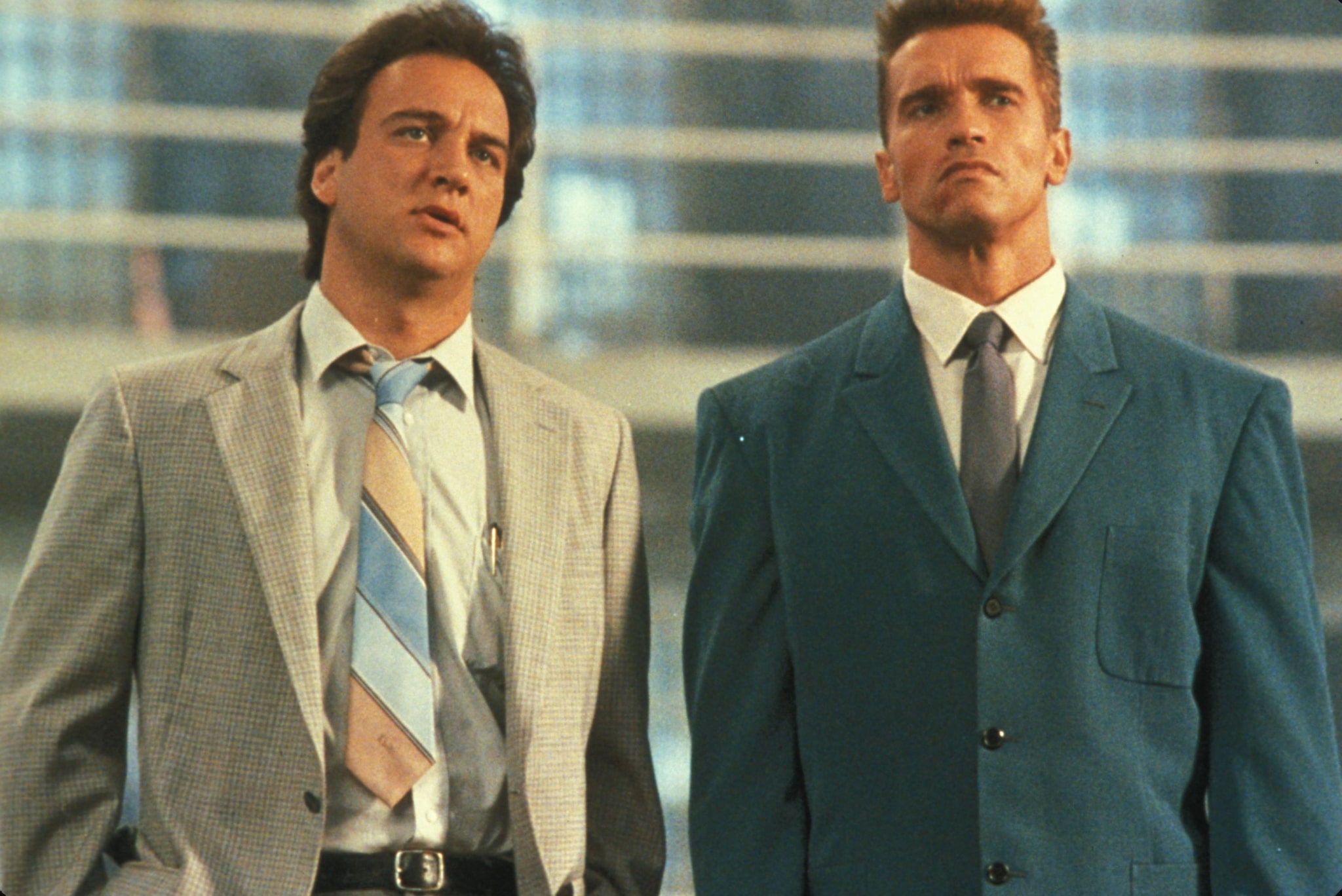
Without wanting to body-shame anyone, it’s fair to say that Arnold Schwarzenegger is renowned the world over for his physique, whilst his co-star James Belushi really isn’t. This was not lost on the production team when Red Heat went into production, so everyone realised things needed to be evened out a little between the leading men.
Belushi was instructed to gain ten pounds to play Chicago cop Art Ridzik, more in terms of general bulk than muscle, as the character was intended to come off as something of a slob. Conversely, Schwarzenegger was conversely asked to lose ten pounds. As a result, while Schwarzenegger clearly has greater muscle mass, the two men are close in overall bodyweight.
17. It was the first Hollywood movie to shoot scenes in Moscow’s Red Square
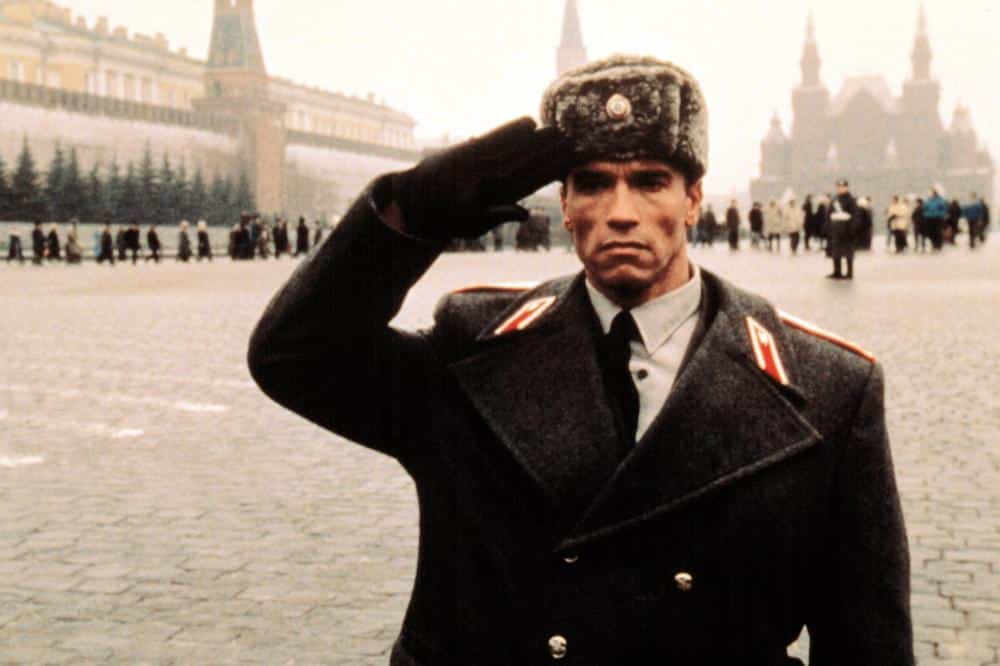
Red Heat was in many ways a breakthrough film for Hollywood representations of Soviet Russia, in what proved to be the final years of the Cold War. On top of the fact that it cast a Soviet as a good guy instead of a villain (as was far more common at the time), Red Heat was also the first American movie to shoot scenes in Moscow’s iconic Red Square.
Contrary to some accounts, the Red Heat crew say they had been granted permission to film there (some have claimed they filmed there illegally with minimal crew). Whatever the case may be, Schwarzenegger has stated he was surprised to be recognised on the streets, as his movies had never been officially released in the USSR.
16. James Belushi’s ex-wife cameos as the waitress Ridzik insults
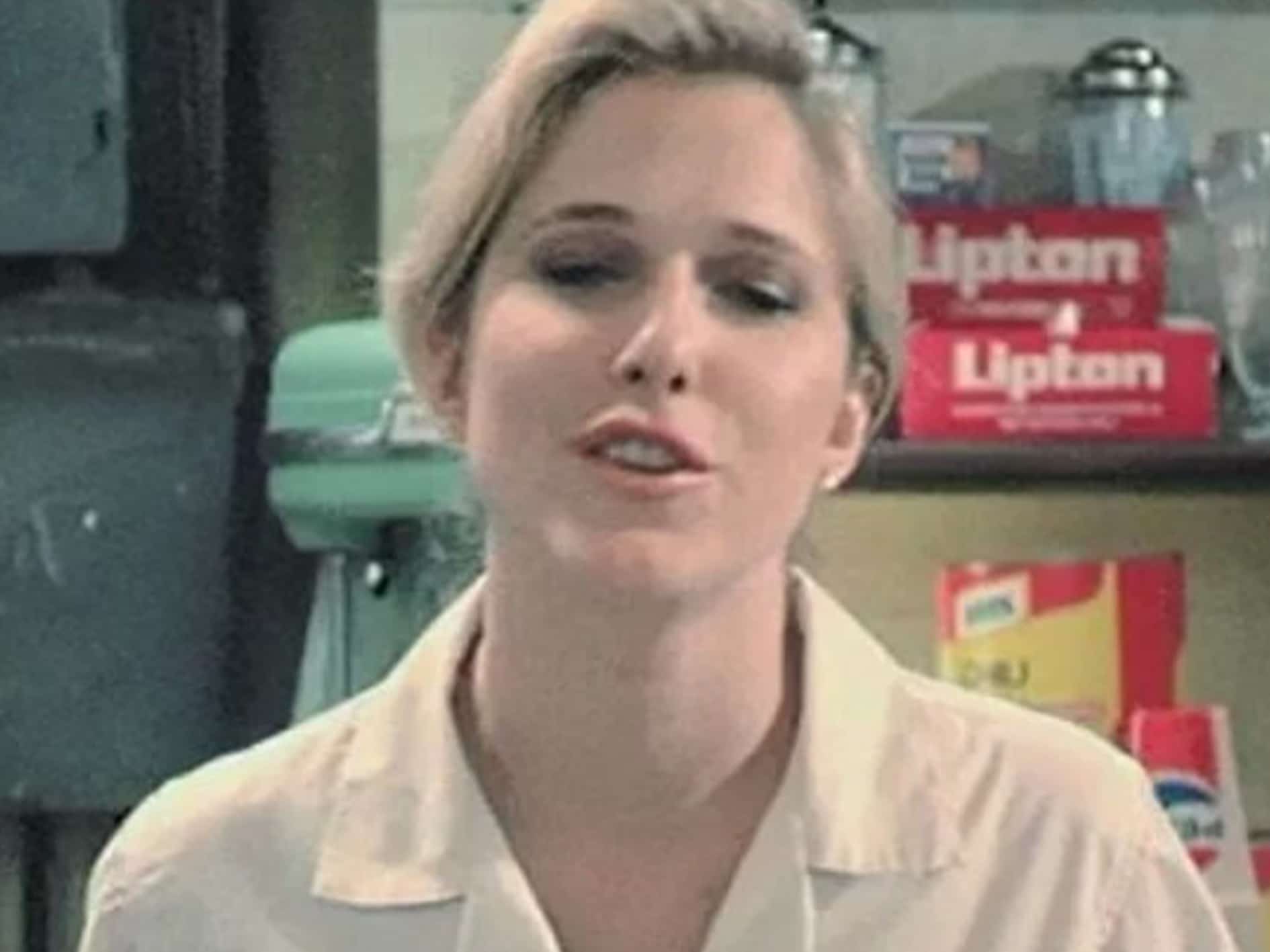
Much of Red Heat is taken up by Belushi’s Ridzik being rude to, well, pretty much everyone he interacts with. One person he is particularly impolite to is the waitress in a coffee shop toward the end of the film, who he crudely addresses as ‘sweet cheeks.’
The actress in question is Marjorie Bransfield, who was in fact married to Belushi not long thereafter. Bransfield and Belushi married in 1990, but eventually went their separate ways and were divorced by 1992. Her short CV includes a few more bit parts in James Belushi movies, including K-9.
15. The film was being written as it shot
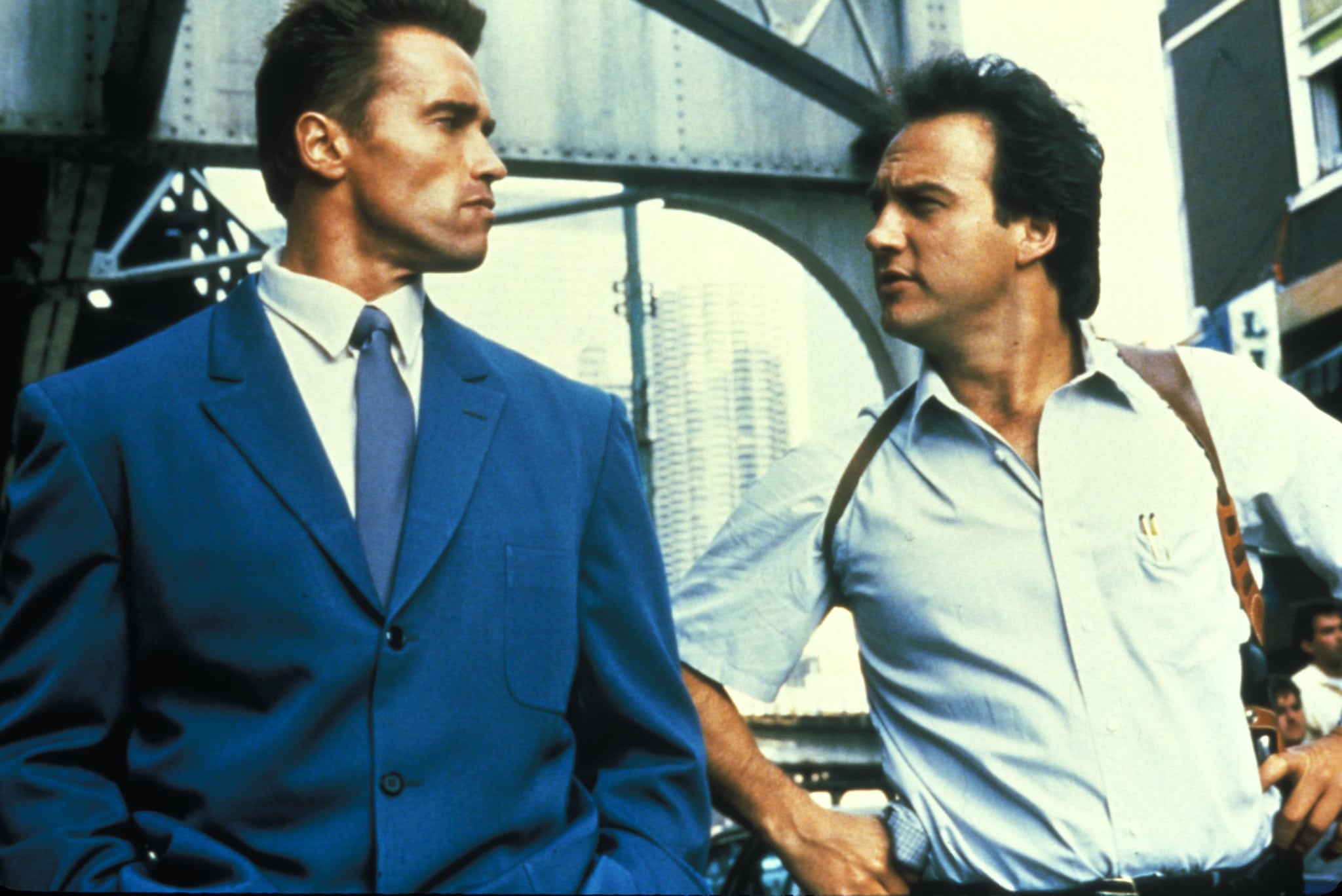
Not only did Walter Hill not have a complete script before pitching Red Heat to Schwarzenegger – he didn’t even have one by the time cameras were rolling. Constant re-writes continued once Red Heat was in production, with contributions from a number of writers who went without screen credit.
As well as the credited Harry Kleiner, Troy Kennedy Martin and Hill himself, other writers who worked on Red Heat without credit included Steven Meerson, Peter Krikes, John Mankiewicz and Daniel Pyne.
14. The final chase scene uses buses because Schwarzenegger was too big for a car

Like many 80s action movies, the explosive climax of Red Heat involves a high speed chase through the city streets. However, unlike most, Red Heat’s vehicular showdown involves not cars, but buses, with Schwarzenegger’s Danko and Ed O’Ross’s Viktor Rostavili each behind the wheel of a mighty MCI MC-7 Challenger bus.
Walter Hill has said he chose buses over cars in part for sake of doing something different, but also because it seemed in-keeping with the larger-than-life ethos of the film – and, of course, its star. The director explains, “I thought it was very appropriate for Arnold. He doesn’t fit well in cars.”
13. The bathhouse fight scene was shot across two different countries
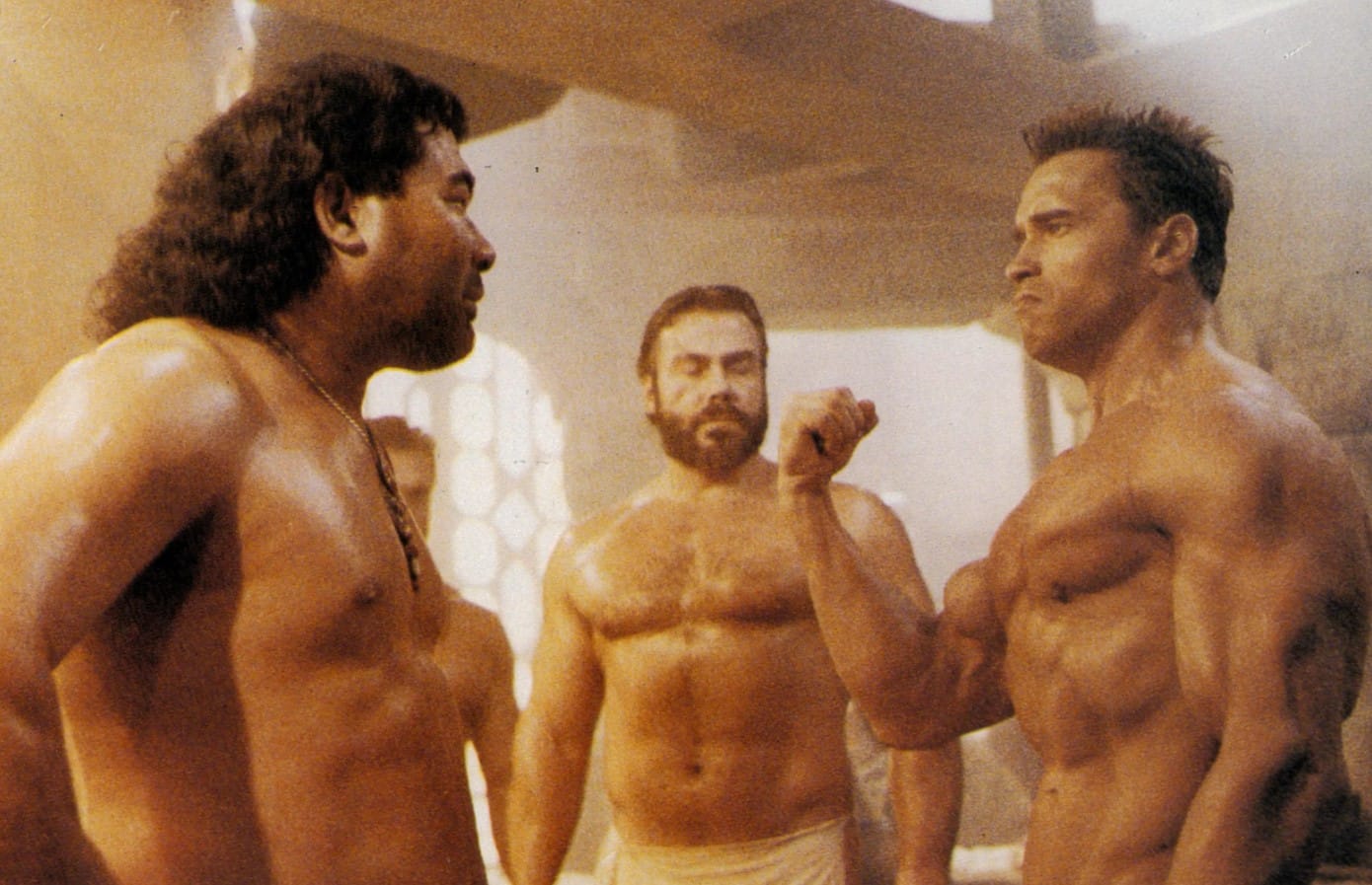
Red Heat gives Schwarzenegger perhaps his most eye-opening introductory scene since that of The Terminator. In his first scene, the star wears nothing more than an alarmingly small towel, surrounded by many men and women who are similarly attired, in a steamy Russian bathhouse – where (believe it or not) violence ensues.
As surprising as this sequence may be, it may be an even greater surprise to learn it was shot in two different countries. The first half of this scene was shot at the Rudas Thermal Bath, a real bathhouse in Budapest, Hungary. However, once the fight is taken outside, the snowy exterior shots that can be seen were captured in Austria.
12. The prison scene features real convicts as extras
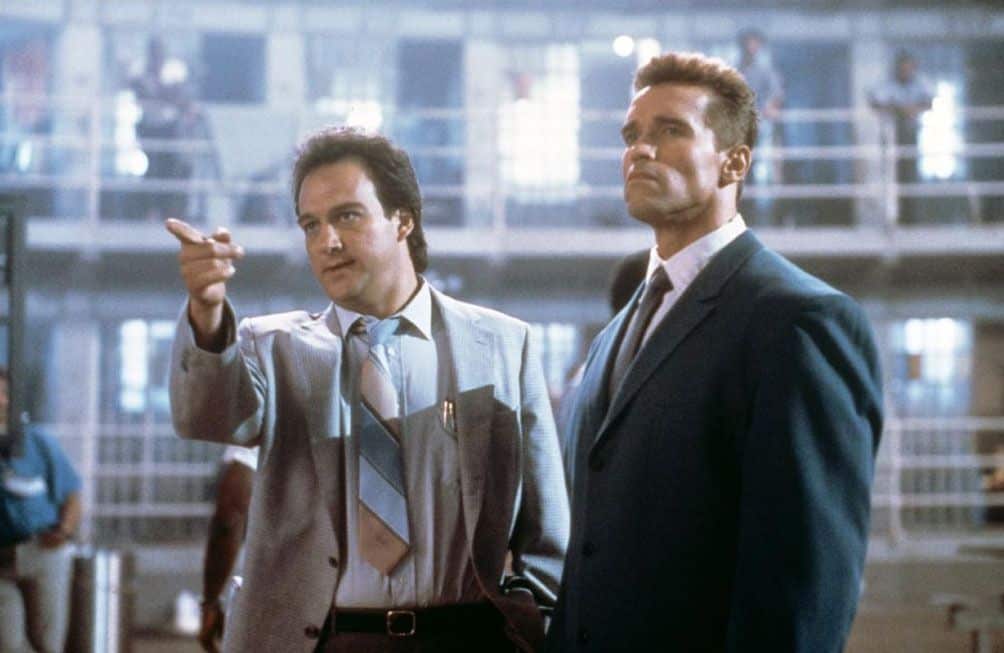
Once Schwarzenegger’s Danko has come to Chicago and been partnered with Belushi’s Ridzik, their investigation leads them to prison, where they interrogate convicted drug dealer Abdul Elijah (Brent Jennings). The prison in question is the Joliet Correctional Center, which was at the time a real, functioning prison in Illinois.
As they were shooting in a prison which was in use, the production employed over 200 inmates as extras in the scene. Nor was this the only notable time Joliet was used on film, as James Belushi’s late brother John leaves the prison in the opening scene of 1980’s The Blues Brothers.
11. Schwarzenegger learned Russian and watched Greta Garbo to prepare for the role

In a perhaps surprising move, Walter Hill advised Schwarzenegger to watch one specific film to help him prepare for the role of Ivan Danko. The film in question was 1939’s Ninotchka, in which Swedish film legend Greta Garbo portrays a hard-nosed Russian in the comparatively carefree Paris.
Schwarzenegger recognised how this resonated with how Red Heat’s Danko is at odds with 80s Chicago and his new partner Ridzik. Not that this was the only preparation Schwarzenegger did for Red Heat: the fact that he spent three months learning to speak Russian must have also been helpful.
10. Ivan Danko’s handgun doesn’t actually exist
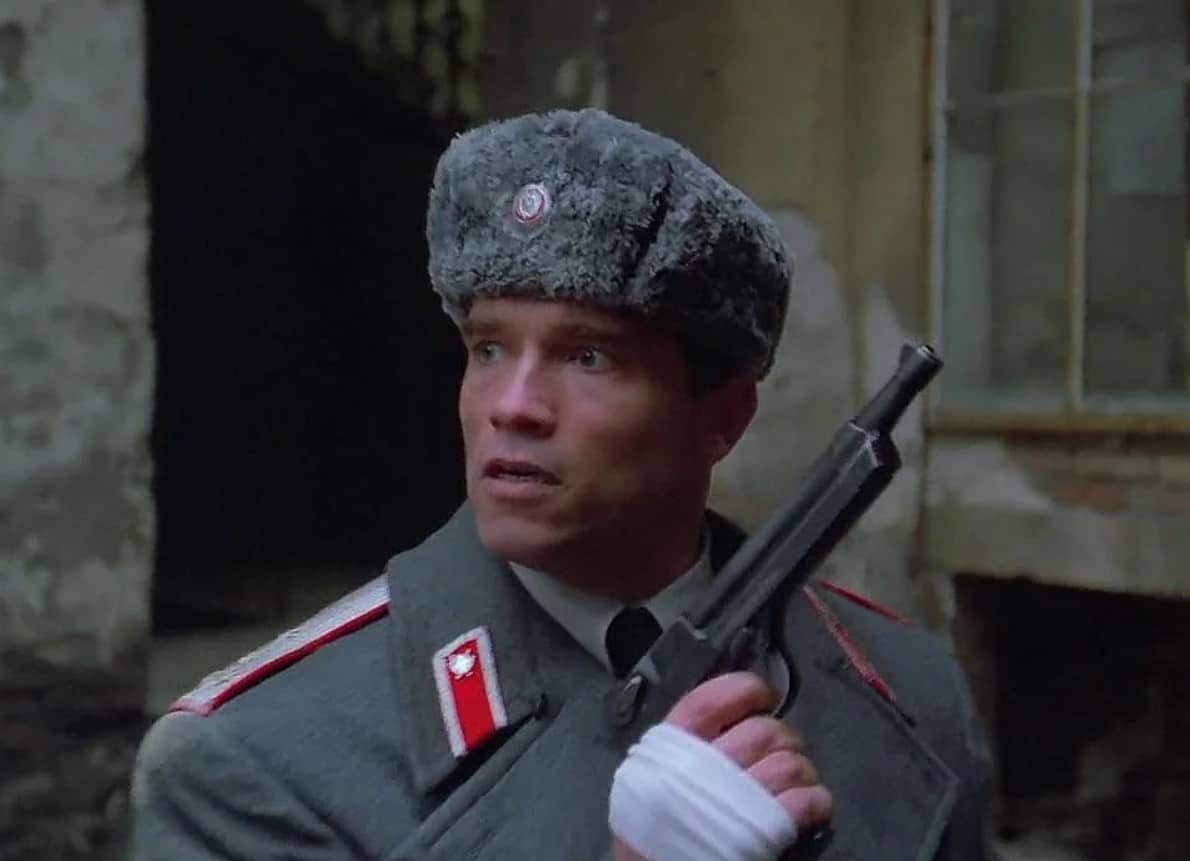
In Red Heat, we see Schwarzenegger’s Soviet cop Ivan Danko use a Podbyrin 9.2 mm handgun, which he assures us is the most powerful handgun in the world. Sounds fine to most of us, but those who know their weapons will probably be aware that no such gun actually exists.
The Podbyrin was a mock-up built by the Red Heat’s armourer Tim LaFrance, constructed with parts from the .357 Desert Eagle. Curiously, the Podbyrin made one other appearance on screen, in a perhaps unlikely place: an episode of Pamela Anderson’s late 90s TV series VIP.
9. Walter Hill deliberately toned down Schwarzenegger’s ‘cartoonish’ action man persona
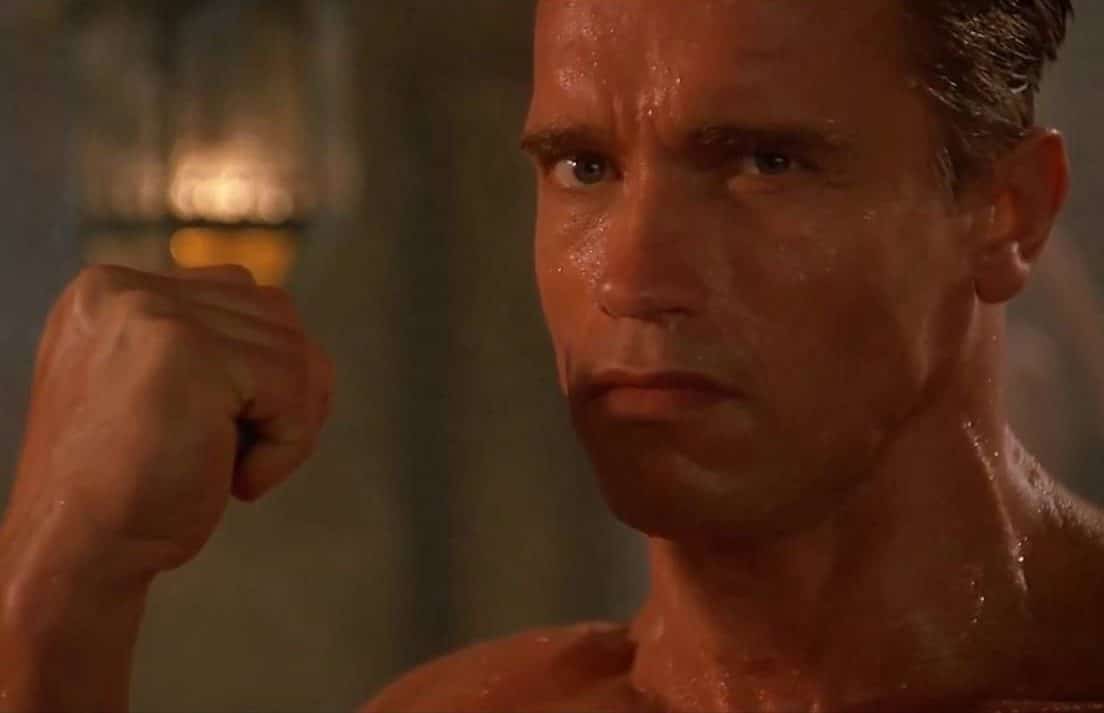
By the late 80s, such films as Commando and The Running Man helped Arnold Schwarzenegger develop a cartoonish action hero persona, relying heavily on absurd physical feats and sardonic one-liners. For Red Heat, writer-director Walter Hill made a point of keeping things just a little bit more grounded.
Hill says, “I wanted to do a traditional John Wayne/Clint Eastwood larger-than-life movie,” and says he “had confidence in (Schwarzenegger) as an actor… everyone thinks it’s his muscles. It’s not that at all: it’s his face, his eyes. He has a face that’s a throwback to a warrior from the Middle Ages, or Ancient Greece.”
8. A character from a previous Walter Hill film makes an appearance
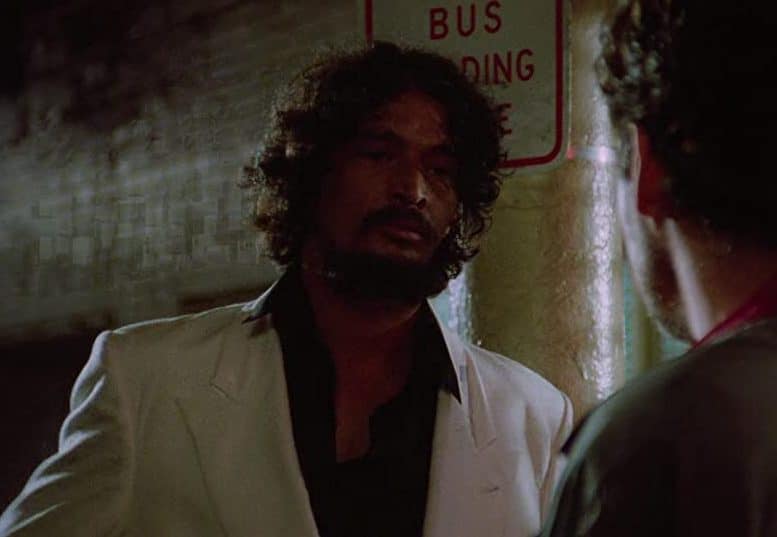
Long before the term ‘Easter Egg’ had entered the popular vernacular, director Walter Hill gave a sly nod to astute followers of his work in Red Heat. Late in the film, Ed O’Ross’s Viktor meets a contact outside the bus station, clad in a distinctive white suit.
The character’s name, though never mentioned, is Lupo, portrayed by actor Luis Contreras. He had previously appeared as this very same character in Hill’s earlier film Extreme Prejudice, in which Powers Boothe plays a drug lord who wears a similar white suit.
7. James Belushi makes a wisecrack about a controversial 1987 boxing match

In one scene, Belushi’s motor-mouthed Ridzik snaps at a perp (a black man with a shaved head and a moustache), “you look like Marvin Hagler… I lost money on Hagler!” For the benefit of those of us who don’t know our 80s boxers, Marvelous Marvin Hagler was the undisputed middleweight champion from 1980 to 1987.
This winning streak was broken in April 1987, when Hagler lost to Sugar Ray Leonard on a split decision. This result was hugely controversial, with many – reportedly including Leonard himself – believing the victory was Hagler’s. Hagler retired from boxing soon afterwards, and had a short career in low-budget action movies in the 1990s.
6. It shares its name with a 1985 Linda Blair prison movie
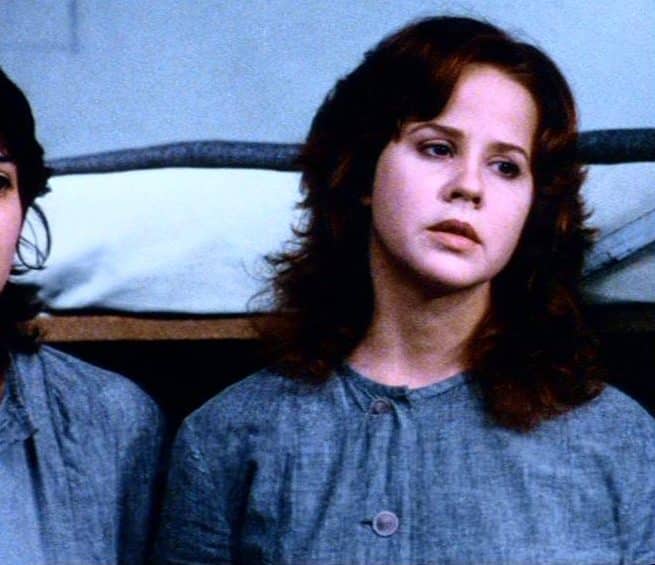
When naming their movie Red Heat, clearly neither Hill nor studio Carolco were too concerned that a film with that exact same title had been released only three years earlier. 1985’s Red Heat was a low budget women in prison movie, an exploitation subgenre renowned for its high level of sleaze.
It was one among a series of such movies made in the 80s starring Linda Blair, the former child actress best known for her role in The Exorcist. This earlier Red Heat doesn’t have too much in common with the 1988 film, aside from the Russian aspect, as it casts Blair as an innocent American woman who is unwittingly thrown in a Soviet gulag.
5. Stuntman Bennie E. Dobbins died of a heart attack during the bathhouse scene
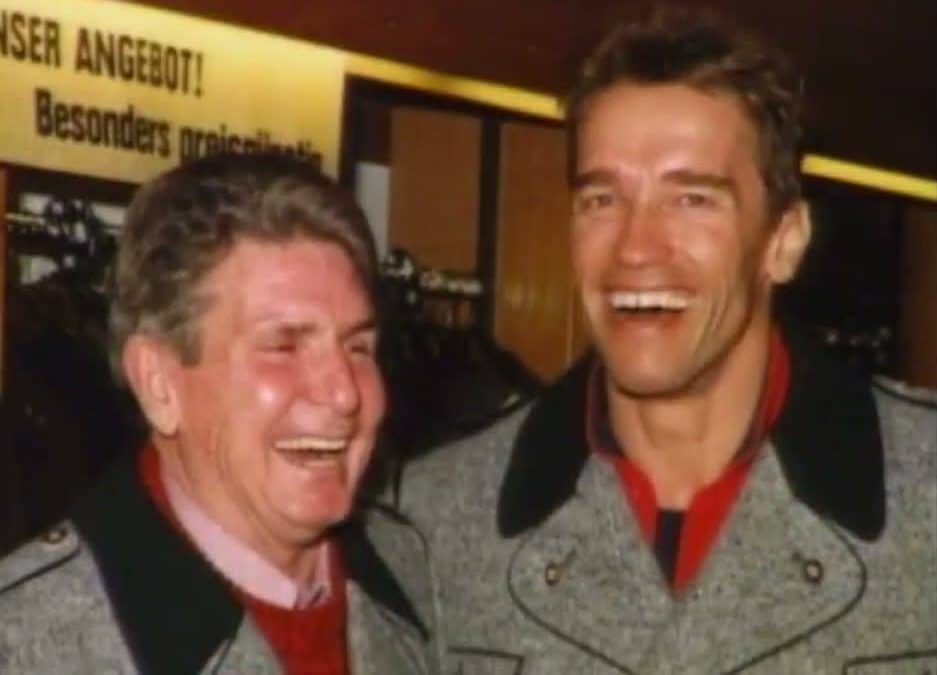
Bennie E. Dobbins, Red Heat’s stunt coordinator, died of a heart attack on February 5th 1988, while the crew were filming the bathhouse fight exteriors in Vienna, Austria. The film’s end credits begin with a dedication in his memory, whilst Schwarzenegger gives a salute on screen.
Schwarzenegger and Walter Hill felt the loss deeply, as both of them had collaborated with Dobbins on numerous occasions. Dobbins had worked with Schwarzenegger on Commando and The Running Man, and also did stunts on Hill’s films Southern Comfort, 48 Hrs., Streets of Fire and Brewster’s Millions.
4. Several scenes were deleted
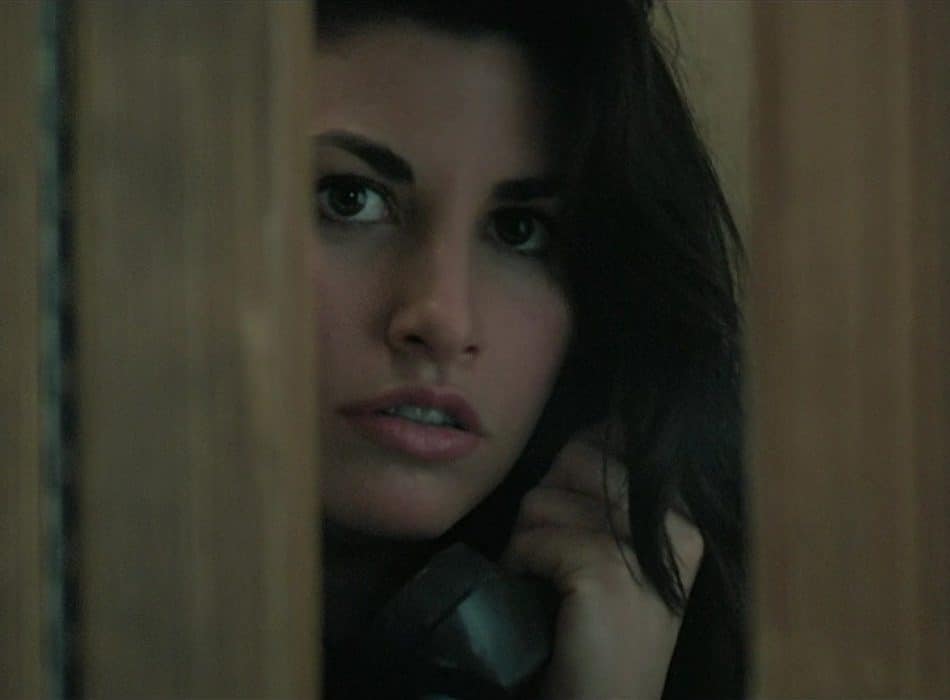
As has long since been common knowledge for anyone who watches DVD extras, not every scene shot for a movie winds up making it into the final cut, and Red Heat was no exception. For one, the prison sequence was longer, and saw Schwarzenegger’s Danko lift weights and fight a convict in order to demonstrate his strength to Abdul Elijah.
There were also more scenes featuring Gina Gershon as Cat, the unwitting American dancer who agreed to marry Viktor for money. A whole subplot was deleted, which would have seen Cat co-operate in an attempted sting operation against Viktor which goes wrong.
3. There was a video game adaptation

1989 saw the release of a Red Heat video game adaptation, published by prolific game house Ocean Publishing. The game was a sideways-scrolling beat-’em-up, presented in a widescreen format to emulate the feel of the cinema (remember, this was back when all TV screens were square).
However, the game completely disregards the ‘buddy’ aspect of the movie, as the only playable character is Schwarzenegger’s Danko, with Belushi’s Ridzik sidelined. Ocean published Red Heat to the home computers Amiga, Amstrad CPC, Atari ST, Commodore 64 and ZX Spectrum.
2. The critics didn’t think it was all that red-hot

Red Heat was by no means a critical disaster, but the critics weren’t especially blown away by the film either. While it was praised as an efficient enough action thriller, most felt it didn’t have quite so much charm as Schwarzenegger and Hill’s previous hits.
However, some reviews were a little more generous. The influential Roger Ebert gave Red Heat three stars, and called it a “superior example” of the buddy cop movie. Today, the film carries a reasonable 67% fresh rating at Rotten Tomatoes.
1. It was only a modest box office success
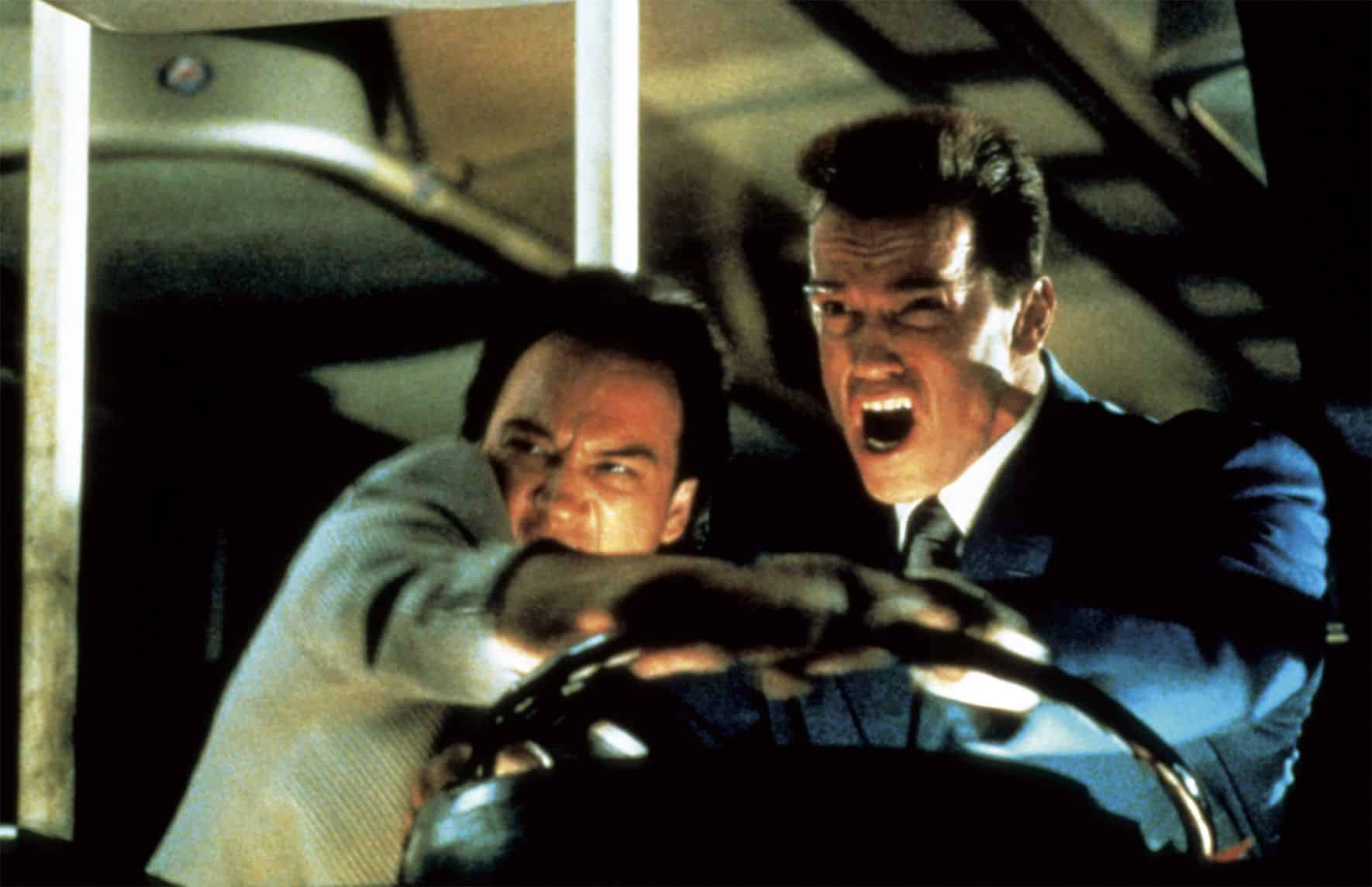
On its opening weekend in June 1988, Red Heat went straight to the top of the US box office with a bullet, with takings of $8.1 million. The film didn’t have much staying power, however, and wound up earning only $35 million from domestic ticket sales by the end of its theatrical run.
As such, Red Heat barely broke even in the US, as it had cost a reported $30 million to make (although this does not take into account international ticket sales). In any case, Red Heat’s takings were dwarfed by those of Schwarzenegger’s other 1988 release, the PG-rated comedy Twins, which made a mighty $216.6 million worldwide.